In China, India, Oceania, Australia, and in the north of Africa, abutilon, amazingly beautiful, belongs to the malvaceae family. The attention of florists is attracted by the abundance of forms and a rather long colorful flowering, beginning in spring and ending in late autumn.
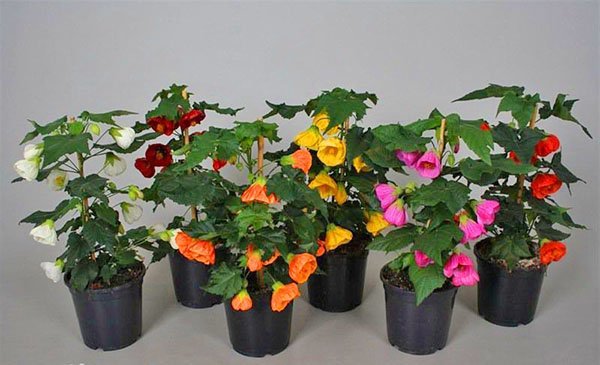
At home, about 10 types of culture are grown, which is absolutely unpretentious in care, so even inexperienced flower growers can become the owner of a Chinese lantern.
Content
Types of Abutilon
Hybrid and decorative varieties of culture represented by compact bushes, trees or herbaceous plants are suitable for indoor maintenance.
The leaf plates are large (up to 10 cm) carved, flexible, delicate, resembling maple greens. They have emerald, heterogeneous or spotty color.
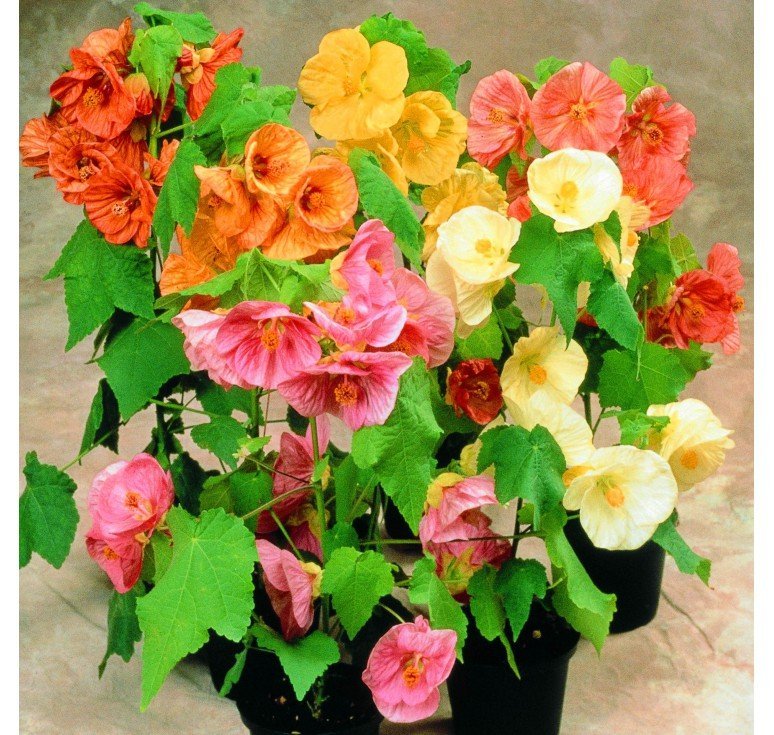
Inflorescences are located on long legs. The shape of the buds resembles bells. Depending on the variety, there can be scarlet, straw, lemon, carrot, snow-white and a shade of flamingos with numerous stamens.
The most popular types of indoor maple (photo below) are:
- Abutilon Juliet. For 12 months it becomes 50 cm higher, unpretentious to the conditions of detention. Bright flowers reach 6 cm across. Growing from seeds, you can get the buds of the most unexpected and bright color.
- Abutilon Bella. It is a compact branchy bush (up to 40 cm in height). Bright bell-shaped flowers reach 7 cm across. It does not require regular pruning and pinching, blooms all year round.
- Grapevine Abutilon. The shrub grows to 2.4 m, the shoots are softly pubescent, the leaves are deeply serrated, velvety, up to 15 cm long. Buds on oblong legs, 3-4 pieces are collected in tassels. The corolla changes shape from wide-bell to almost round. Flowers are a mixture of azure and lavender shades, in some cases there are streaks of a deeper color. Blossom begins in late spring.
- Abutilon Megapotam. For the carmine-scarlet base of the corolla from wedge-shaped petals, it was called "Chinese lantern." Often grown as an ampelous culture, in need of a garter to a stand-alone support. The leaves are oblong with notches along the perimeter, saturated green or emerald tones. The inflorescences are single, the petals are painted in a lemon, orange or purple hue. If you provide the necessary microclimate and adhere to all the rules of care, blooms all year round.
- Abutilon Organza. Evergreen shrub growing up to 60 cm. In an adult plant, the central shoot is lignified, the lateral branches remain flexible, thin, supple. Leaves reach 10 cm, have a rich green tint with light, well-defined veins. Flowers slightly drooping, up to 7 cm in diameter. Can be golden, pink, orange, snow-white color of various degrees of intensity.
- Abutilon Hybrid - An extensive group of varieties, which include shrubs and shrubs, up to 1.5 m high. Leaves, shaped like a heart or a chicken egg, are strewn with hard fibers on both sides. The flowers are bell-shaped, arranged singly or in pairs. The palette varies from snow white to rich burgundy.
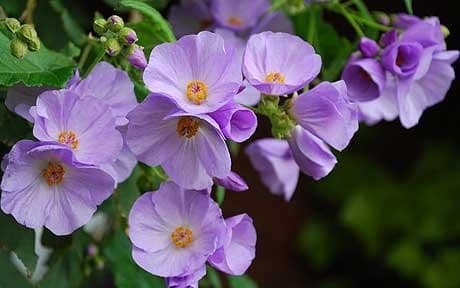
 You may be interested in:
You may be interested in:Abutilone care at home
Indian mallow is an unpretentious plant and does not require specific content. It is enough to find out her “preferences” and follow the basic rules of care:
- The optimal location is the space at the windows oriented east, west, southeast or southwest. A flower prefers bright but diffused light. If you put it on the south side, additional shading in the afternoon hours. This is especially true for varieties with variegated or light leaves. Direct UV rays reduce the severity of the pattern and increase the risk of burns. Placement on the windowsills of the northern direction involves additional artificial illumination. It is also capable of providing continuous flowering.
- In summer, the air temperature should be between 20 ° C-26 ° C, in winter - 12 ° C-15 ° C. When lowered to 5 ° C-10 ° C, the Chinese lantern will begin to drop leaves. Increasing the parameters to 30 ° C stops the bud laying and provokes the dumping of existing inflorescences.
- In hot times and in winter, when heating devices are working in the room, abutilon needs abundant watering. Do not allow the complete drying of the land coma. Humidification of the soil is carried out when the top layer of the substrate has dried. Inadequate watering causes wilting, loss of buds, and death of the root system. If wintering is organized in cool, the procedure is carried out with less frequency in order to avoid rotting of the roots.
- The plant does not have special moisture requirements, but periodic spraying is not prohibited. It can be carried out in summer, during extreme heat or in winter, when the air in the room is overdried.
- To form a lush, uniform crown and stimulate abundant flowering, Indian mallow needs a systematic pruning. Spend it in the first decade of March, before the start of active growth. Shoots are shortened to 1/3 or 2/3 of the length. Young bushes need pinching. After this, the plant should be rearranged in a warm room, moisturize abundantly and enrich the soil with nutrient components.
- Due to the high growth rate, abutilone needs to be fed. From early spring to late autumn, mineral and organic fertilizers are applied alternately every 2 weeks. After pruning, when intensive growth of green mass begins, high nitrogen concentration products are recommended. During budding, it is better to focus on drugs saturated with potassium and phosphorus. In winter, the Chinese lantern needs top dressing only if flowering continues.
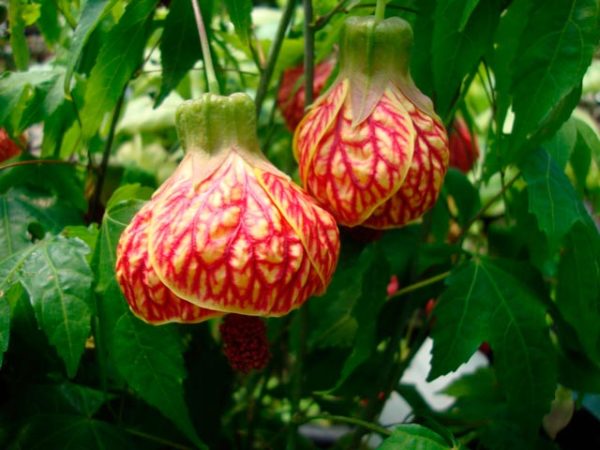
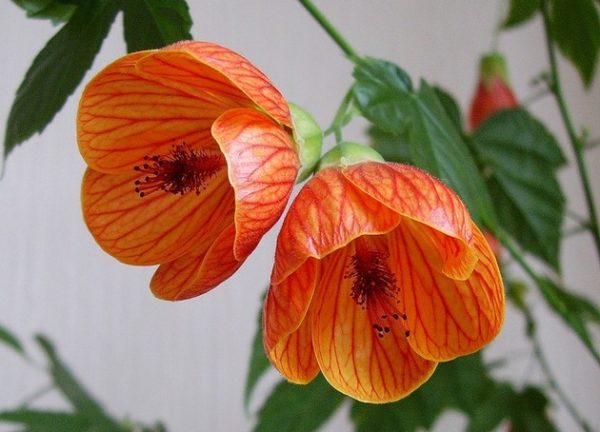
For indoor maple suitable universal soil mixture, which is sold in specialized stores. If desired, it can be made independently:
- sheet earth;
- turf;
- peat;
- sand;
- humus.
All components are taken in equal amounts.
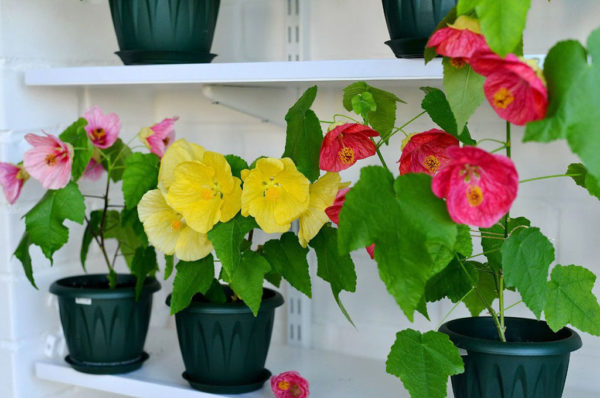
In addition, abutilon feels great in a mixture of turf soil, coniferous or deciduous humus, sand, coconut substrate (proportion 2: 2: 0.5: 1).

Transplantation and reproduction
Young Chinese lanterns grow very quickly, and therefore require an annual transplant. For adult indoor maples, the procedure is carried out with a frequency of 2-3 years:
- Scald with boiling water a new pot, 2-3 cm larger than the previous pot in diameter.Too much capacity will inhibit flowering, which will not come until the root system has mastered all the free space.
- Anneal the soil mixture and material used as the drainage layer in the oven.
- Cover the bottom of the pot (about 2 cm in height) with expanded clay, pebbles or broken bricks. From above it is possible to lay sphagnum moss, due to which moisture exchange will improve. Pour a small amount of soil.
- Carefully remove the flower from the old flowerpot, as far as possible to free the roots from depleted land. If it is not possible to carry out the procedure easily, it is better to leave the root system alone, otherwise it can be damaged.
- Put abutilon in a new container, straighten the roots. Pour the prepared substrate.
- Water abundantly.
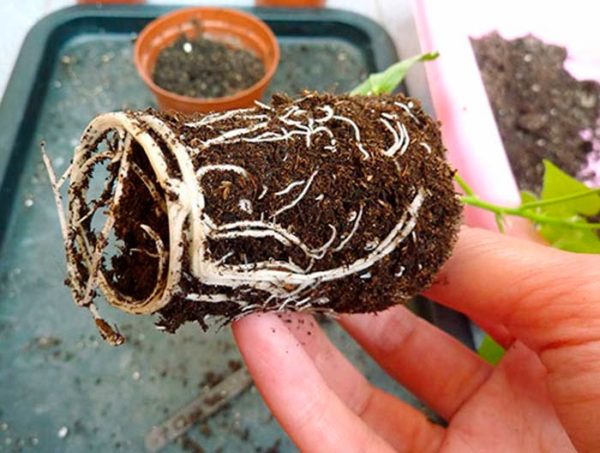
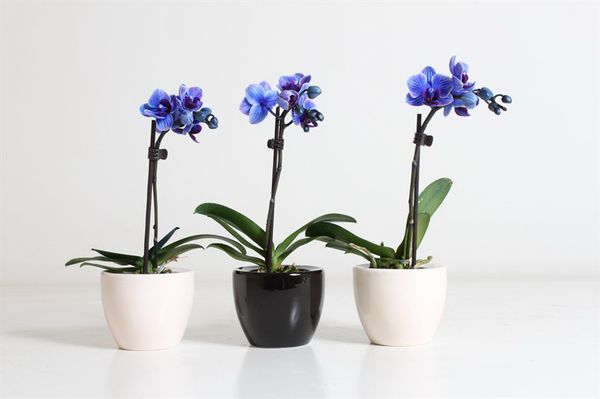 You may be interested in:
You may be interested in:Growing abutilon from seeds at home is quite simple. To do this, just look at the photo and follow the step by step instructions. But first you need to pollinate the plant with a soft brush. After a while, a box of hard seeds will appear inside. Before landing, they must lie in a dark place for 1 month. Germination persists for 2 years.
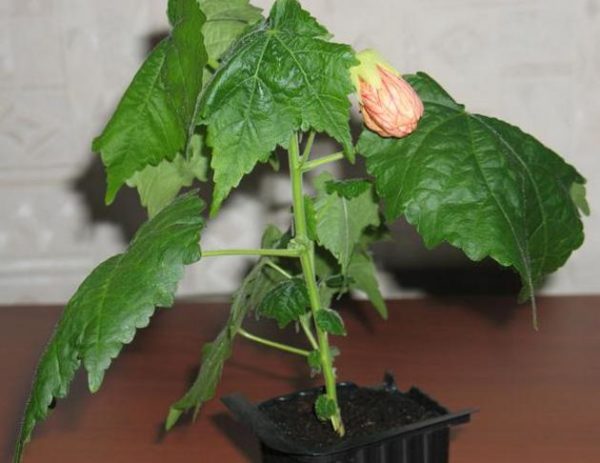
Then, the preparatory steps follow:
- For sowing, a mixture is suitable in which seedlings of garden crops are grown, with the addition of sand and perlite, a substrate familiar to abutilon or other loose soil with neutral acidity. Before use, it must be shed with boiling water or a weak solution of potassium permanganate for disinfection. Some gardeners say about the excellent results of sowing in peat moss tablets.
- Choose medium-sized dark seeds, sand hard coat or scratch with a needle. Wrap in a cloth and soak it with warm water or a solution that includes a growth stimulant. Leave for 12 hours.
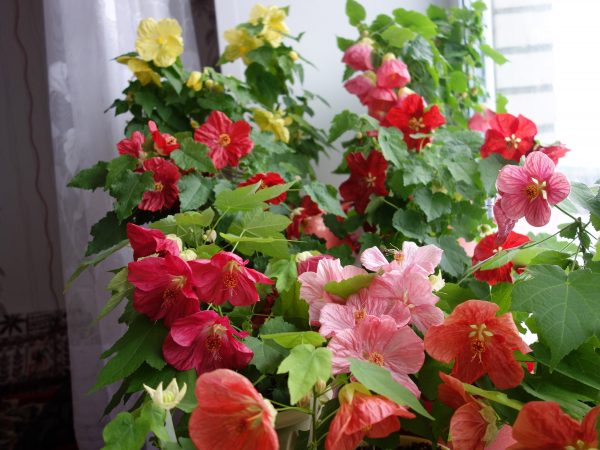
After that, you can start sowing:
- Fill a shallow container with a damp substrate.
- Put seeds on the surface (distance 1-2 cm from each other).
- Sprinkle with earth at 5-6 mm.
- Cover the container with cling film or glass to create greenhouse conditions.
- Maintain a temperature of 23 ° C to 28 ° C.
- Open a homemade greenhouse daily for ventilation.
- After 5-15 days, the first shoots will appear. After that, the shelter needs to be removed.
- Move the container to a well-lit place.
- Water as the land dries.
- After the appearance of 2-3 leaves (about a month), dive into separate pots, with a diameter of not more than 5-6 cm. A drainage layer at the bottom of the pot is required.
- After 4-5 months, young plants need to be reloaded in containers with a diameter of 10 cm.

 You may be interested in:
You may be interested in:For the cultivation of hybrids, propagation by cuttings is more suitable. This method preserves all varietal properties of the plant:
- Cut off the top of a young shoot 10-12 cm long.
- Leave 3-4 internodes, tear off the remaining leaves with buds.
- Dip the cuttings in a jar of water or a solution that affects the growth rate.
- Cover with plastic wrap to create a greenhouse effect.
- After the appearance of roots, 3-7 cm long should be planted in a pot with a diameter of not more than 7 cm. The bottom must be covered with a drainage layer.
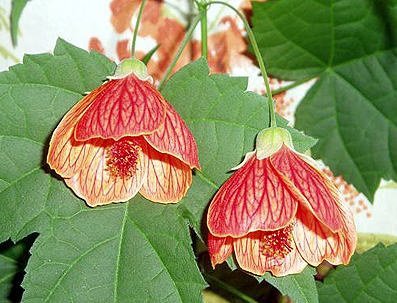
Diseases and pests of home maple
Abutilon can be considered a hardy plant. But some inaccuracies in care can provoke various problems:
- Lack of flowering. Possible causes: insufficient light, large volume of the pot.
- Dropping buds. Provoking factors: lack of moisture and nutrients in the soil, drafts.
- Yellowing, falling leaves. The problem is root damage. In some varieties, this only indicates the onset of the resting phase.
- Plate twisting. Reason: direct exposure to ultraviolet rays, high room temperature and low humidity.
- Yellowing of the lower leaves. Provoking factor: lack of light, mineral and organic substances in the substrate.
- Lightening plates. It occurs due to a lack of fresh air, insufficient watering and a lack of trace elements in the soil.
- Rust. It develops as a result of damage by a fungus. Damaged parts of the plant are removed, the bush is treated with fungicides.
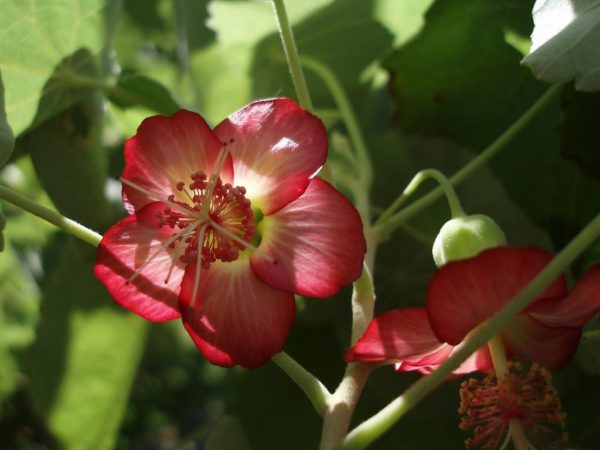
In addition, the following pests can attack abutilone:
- Shields. Brown plaques and a sticky liquid appear on the surface of the leaves. The lower plates turn yellow and fall, while the young ones dry out. Shoots are bent, growth slows down, flowering stops.
- Thrips. A characteristic feature is the presence of whitish spots on the inner surface of the greenery and silvery shine. On the leaves, yellow and discolored spots, stripes, strokes are noticeable. Gradually, they merge and the affected tissue dies. Flowers lose their decorativeness and fall off.
- Spider mite. The presence of the parasite is indicated by small light dots and the finest strings that surround the plant. With severe damage, the leaves turn white.
- Aphid. The tops of the shoots are deformed, the plates twist and turn yellow, shiny spots appear. The buds do not develop or give deformed flowers.
- Mealybug. Lumps similar to cotton or fluff are visible on the affected plant. The bush stops growing, shoots are deformed, leaves and buds fall.
Parasites fight insecticides. For complete destruction, several treatments with an equal time interval may be required.
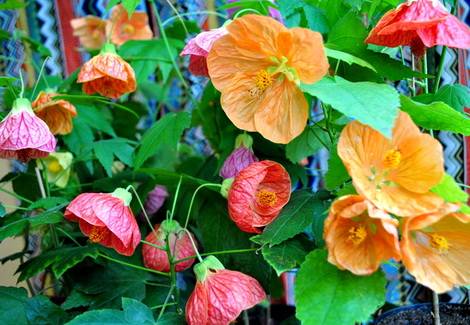
Abutilon is a completely unpretentious and original plant, which should be in the collection of every self-respecting florist. It is enough to follow simple rules of care and Indian Mallow will delight almost year-round, incredibly beautiful flowering.




 10 beautiful annuals that bloom all summer
10 beautiful annuals that bloom all summer Sow in the ground, without seedlings: 10 beautiful and unpretentious flowers
Sow in the ground, without seedlings: 10 beautiful and unpretentious flowers Platicodon planting and outdoor care
Platicodon planting and outdoor care Hosta - planting and care in the open ground in the Urals
Hosta - planting and care in the open ground in the Urals